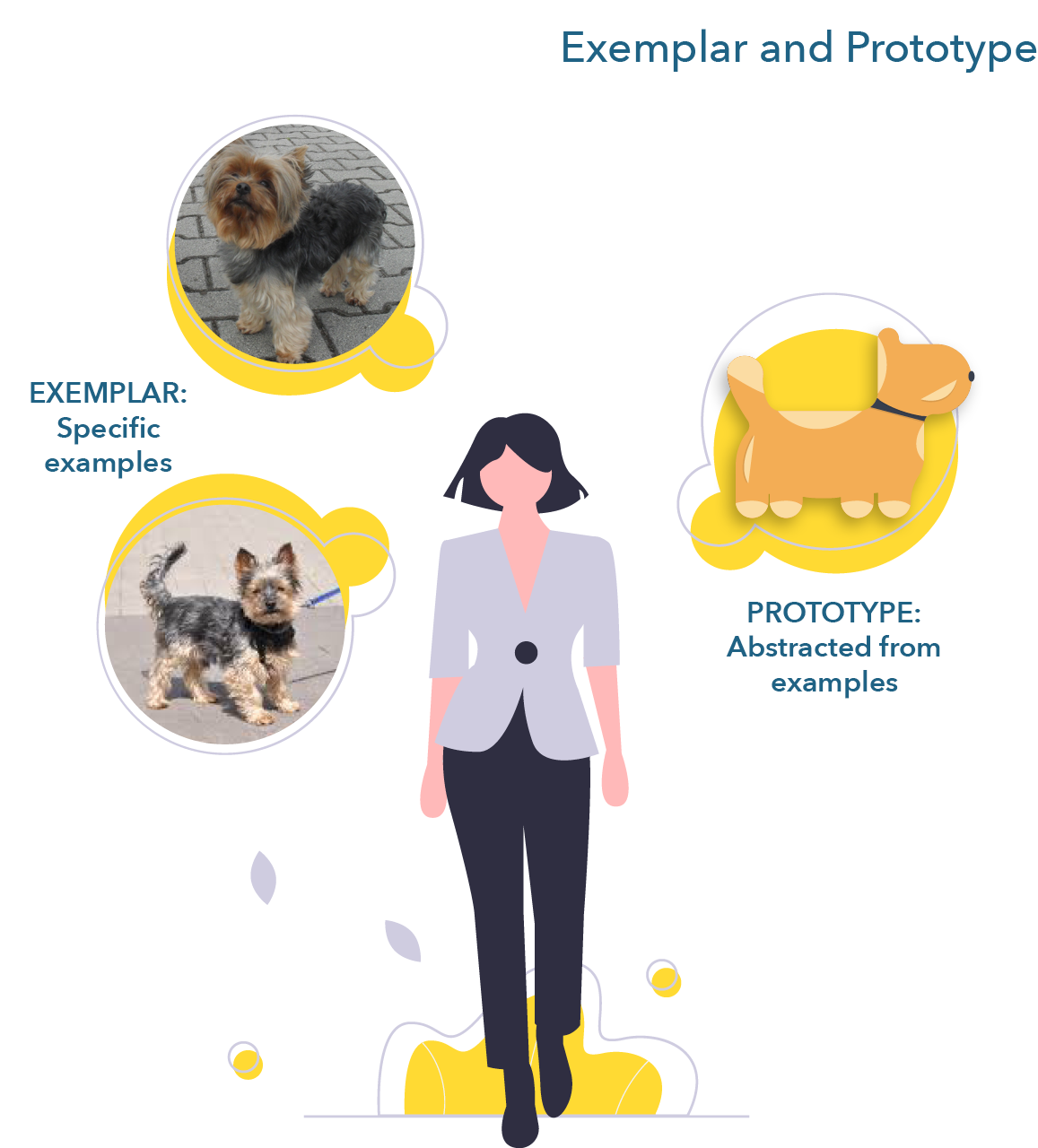Understanding the Competition and the Market
Something to keep in mind when creating content for social media platforms is associated with prototype and exemplar theories. Without getting into too much detail, the central idea here is that in order to stand out, you first must fit in.
The idea goes as follows: Each category has some sort of a “standard” member, a “prototype” that people measure whatever is in this category against (or, from an exemplar perspective, each category has “dominant examples,” or exemplars, that are used to evaluate whatever is in this category; Figure 6.2). In order to fit in, such as to be considered legitimate as an Instagram account on cosmetics, cars, or tattoos, you must share attributes with the prototype or exemplar. This allows you to fit in.
Figure 6.2 Exemplar and Prototype

For example, fitness accounts tend to share characteristics in terms of what influencers look like (dressed in fitness attire and either looking fit or really, really fit), the setting in which they create their videos (typically, a gym), the kinds of things they post (how to exercise, diet posts, motivational posts, etc.), and so on.
Yet within the fitness category, there exist subcategories organized around different subtypes of fitness influencers. A first example is the fitness therapy profile, a type of fitness account exemplified by influencers such as achievefitnessboston, squatuniversity, and joetherapy. This type of account typically emphasizes science-based knowledge and instructional on how to properly practice fitness and recovery.
A strikingly different type of profile, still within the fitness category, is the “fitness motivational” account, exemplified in accounts such as zacaynsley, joesthetics, mssannamaria, and anna_delyla.
Knowing which subcategory a firm wants to participate in is important because not all personas will be reading all subcategories of fitness accounts. It also allows a better understanding of the category as a whole and how to potentially mix and match approaches, as exemplified by massy.arias.
Once you have gained membership by fitting in, your job is to find ways to distinguish yourself from others. In short, you want to fit in just enough that you are part of the category but you want to differentiate yourself enough that people will want to follow your Instagram account rather than one of your competitors. This is where the uniqueness of your brand comes into play.

No Comments